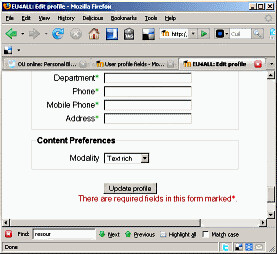The Open University is divided into a number of regions and twice a year the London region runs a staff development event for its associate lecturers who live in and close to our capital. This blog post is a brief summary of an event that took place on Saturday 16 November 2013. My own role during the day was quite a modest one (I was only required to do a couple of introductions). This meant that I was able to wear my ‘tutor hat’ for much of the day.
Challenges for ESL students
ESL is, of course, a common abbreviation for ‘English as a second language’. From time to time I’m asked what the university is able to do to help students who struggle with English. There are a couple of schools of thought about this. One school of thought is that English and writing skills should be embedded within modules (this is certainly the case within computing and engineering modules). Another school of thought is that there should be a particular course or module that is dedicated to writing (which is the approach that the science faculty takes). There are, of course, pros and cons with either approach. The aim of this session was to offer tutors useful guidance about different resources and materials that could be shared with students. It also aimed to help tutors chat about different challenges they have faced.
One skill that was considered to be important was the reading of papers, and a point was made that this is something that could be practiced. Reading is, of course, a prelude to writing. Although some people might argue that university level academic writing is something that is done only within the university (or academic) context, it can also be argued that learning how to write in an academic way can benefit learners in other ways, i.e. when it comes to writing for business and commerce, or the ability to distil evidence and construct cohesive arguments.
One question that was raised was, ‘how do you offer feedback in instances where students may struggle to read suggestions?’ This was a very good question, and sometimes interventions, or special sessions to help students are necessary.
Our discussions about writing led onto other discussions about plagiarism and academic conduct. Plagiarism is, of course, a word that has very negative connotations. In some cultures, using the words of an authority may be considered to be a mark of respect. On the other hand, developing the ability to write in one’s own words is a really important part of distance learning; it’s both important and necessary for students to demonstrate how they are able to evaluate materials.
The university has very clear policies about plagiarism and academic practice, and this is something that I’ve blogged about previously. (Academic practice conference: day 1 summary, day 2 summary). From the tutor’s perspective, it isn’t an easy task to address these issues thoroughly and sensitively. One thing that tutors could do is to run an activity (which exposes issues that relate to academic conduct). Tutors (or module teams) could show how things should be done, and then tutors could facilitate a discussion using on-line forums, for example.
Another discussion that I’ve noted was the use of the ‘voice’. Different modules may have a preference as to whether students can or should write in the first person. One of the arguments about writing in the third person is that it allows other voices to be more clearly exposed.
During the session, we were all encouraged to do a bit of group work. We were given a sample of writing and we were asked, ‘what resource would you choose to share with your students to try to help them with their writing skills?’ This was a fun activity and it emphasised that there is a lot of resources that both students and tutors can draw on.
To underline this point of resources, there were sets of study skills booklets that were available in the presentation room. These had the titles: Studying with the OU – UK learning approach, Reading and Taking Notes, Preparing Assignments and Thinking Critically. If you’re interested, these can be downloaded from the Skills for Study website.
Developing resources and pedagogy for OU Live
I arrived at this afternoon session slightly late, since I was having too much fun chatting to colleagues. OU Live is an asynchronous teaching and learning tool (which is a posh term to say that people can do things at the same time). In essence, think ‘skype with a whiteboard’. It allows tutors to run on-line sessions with groups of students, offering both audio and text-chat channels. From my own experience, running OU Live can be pretty hard going, so I try to take every opportunity that I can (time permitting) to attend whatever training sessions the university offers.
This afternoon session was presented in two parts. The first part was from the perspective of a science tutor (Catherine Halliwell), whereas the second part was from the perspective of a languages tutor.
Science perspective
I arrived in the session right at the moment when an important point was being made. This was: ‘find a style of delivery that suits you’. It can be quite easy to use OU Live just to give ‘lectures’, but it is possible to use it to deliver dynamic interactive sessions.
One thing that tutors can do is to record their on-line sessions. More students might use a recording of a session than there are students who are able to attend a live session. One of the benefits of recordings is that they have the potential to become a very useful resource. Tutor might, for example, refer students to sections of a recording when they start to revise for their exams. Another thought is that you could explicitly refer to them when a tutor gives assignment feedback (guiding students to parts of a presentation where you have explained potentially difficulty concepts).
Catherine mentioned that her faculty had trialled the use of pairing tutors together to run single OU Live session. Her module, a third level chemistry module, has 10 hours of tuition time. Each session was shared; one tutor would take the lead, and the other would be a ‘wing man’.
Another aspect to OU Live pedagogy which can be easily overlooked is the importance of preparation. Students can be asked to carry out certain activities before a session, such as completing one or more worksheets, for instance, to help to prepare students – or even performing observations, with the view to sharing data.
Catherine also spoke about some features that I had never used, but had been (slightly) aware of. One of these features was the ‘file transfer’ facility, which could be used by the tutor to send students sets of ‘unseen questions’, perhaps in the form of a word document. In some ways, this could be considered to be the electronic equivalent of giving everyone some handouts. (I can also see that this would be especially useful during programming sessions, where tutors might hand out working copies of computer code to all participants).
We were given a number of very useful tips: make the first session as interactive as possible, and feel free to use a silly example. Also, use things like voting, or drawing on a map. Another thought is to turn the webcam on at the start so that the participants know who you are (you can turn it off after a few minutes, of course!) Tutors should try their best to make their sessions friendly and fun.
There are a number of other points to bear in mind: some students can be reluctant to use the microphone, and this is okay. Another approach (and one that I’ve heard of before) is to use OU Live as an informal drop-in session, where students are able to log in to have a chat with a tutor at a pre-arranged time. It’s also important to take the time to look at a student’s profile to make sure whether there are any additional requirements that need to be taken into account. Finally, because it’s possible to record a session, a tutor can always say, ‘I’m going to go through this bit quite quickly; because I’m recording this, you can always go back and play it back later if there’s anything that you miss’.
Languages perspective
The presentation from our language tutor was rather different. We were given, quite literally, an A to Z tour of topics that relate to the use of OU Live, leaving us (and our facilitator), pretty breathless!
A couple of points that I’ve noted include the importance of developing routines and forcing habits (in terms of running sessions at the same time). It’s also a good idea to send group emails, both before and after sessions (so students are aware of what is going to happen). In terms of preparation, it’s a good idea to get on-line around half an hour before just to make sure that you don’t run across any technical problems or issues; having been confronted with the situation of Java software updates in the past this is very sound advice.
During the question and answer session at the end of the afternoon, the issue of the recording of day schools also cropped up again. Our tutors were very pragmatic about this: recording of OU Live sessions should happen, since it allows the creation of resources that all students can use (especially those who could not attend any of the sessions). It is therefore important to let all students know that recording is going to take place either before events, or at the start of an event.
Reflections
There’s always something to pick up from these events. There were two main things that I gained from this session. The first was the early discussions about language support consolidated what I already knew about the importance of academic conduct (and how the university procedures work). Secondly, I picked up some tips about how to connect things together, i.e. connecting together assignment feedback with the use of OU Live recordings.
The next event is to be held at the London School of Economics in March. This event is likely to include a Mathematics Computing and Technology faculty specific session which will be held in the afternoon. The fine detail hasn’t yet been decided on, but this too is also likely to be a good day.



